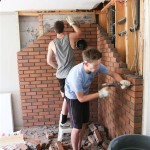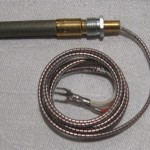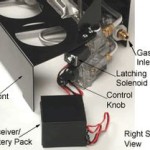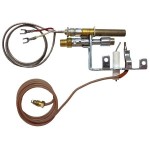Over Fireplace Mirrors: Enhancing Your Living Space
A mirror positioned over a fireplace, often referred to as an over fireplace mirror, is a frequent design choice employed to enhance the aesthetic appeal and functionality of a living space. The strategic placement of a mirror can significantly impact the perception of room size, light levels, and overall ambiance. This article explores various facets of over fireplace mirrors, examining their benefits, selection criteria, installation considerations, and design integration.
Maximizing Light and Space
One of the primary advantages of incorporating a mirror above a fireplace is its ability to amplify natural and artificial light within a room. The reflective surface bounces light around the space, effectively brightening darker areas and reducing the need for excessive artificial illumination. This is particularly beneficial in rooms with limited natural light sources or those with a predominantly dark color palette. The increased brightness can contribute to a more inviting and cheerful atmosphere.
Furthermore, over fireplace mirrors can create the illusion of increased space. The reflection effectively doubles the visual depth of the room, making it appear larger and more open. This technique is especially valuable in smaller living rooms or apartments where maximizing the sense of space is crucial. The perceived spaciousness contributes to a more comfortable and less claustrophobic environment.
Mirrors can also strategically highlight focal points within the room. By reflecting an existing architectural feature or a carefully curated art piece, the mirror draws attention and emphasizes its importance in the overall design scheme. This clever use of reflection can elevate the perceived value and impact of existing design elements.
Beyond aesthetics, the reflective properties of a mirror can serve a functional purpose. In a room with a view, the mirror can capture and reflect the outdoor scenery, bringing the beauty of nature indoors. This is particularly effective in rooms overlooking gardens, landscapes, or urban skylines.
Selecting the Right Mirror Style and Size
Choosing the appropriate mirror style and size is essential to achieving the desired aesthetic and functional goals. Several factors must be considered, including the dimensions of the fireplace, the overall style of the room, and the desired level of visual impact. A mismatch in size or style can detract from the room's overall harmony and diminish the intended effect.
The size of the mirror should be proportional to the fireplace and the surrounding wall space. A general guideline is to select a mirror that is approximately two-thirds the width of the fireplace mantel. However, this is merely a starting point, and adjustments may be necessary based on the specific dimensions of the room and the desired visual impact. A mirror that is too small may appear insignificant, while a mirror that is too large may overwhelm the space.
The style of the mirror should complement the existing decor of the room. Consider the architectural style, color palette, and furniture design when selecting a mirror. For a traditional setting, a mirror with an ornate frame and classic detailing may be appropriate. In a more modern setting, a frameless mirror or one with a sleek, minimalist frame may be a better choice. The frame material, color, and texture should also be carefully considered to ensure a cohesive and harmonious design.
Frameless mirrors offer a clean and contemporary look that can seamlessly blend into any style. Their simplicity makes them versatile and easy to integrate into various design schemes. Framed mirrors, on the other hand, can add a touch of sophistication and personality. The frame can serve as a decorative element, complementing or contrasting with the surrounding decor.
Antique mirrors, with their distressed or aged finishes, can add a touch of vintage charm and character to a room. These mirrors often feature intricate detailing and unique imperfections that contribute to their overall appeal. However, it is important to ensure that the antique mirror complements the other elements in the room and does not clash with the overall style.
Consider the shape of the mirror as well. Rectangular mirrors are a classic and versatile choice, while round or oval mirrors can soften the lines of the room and add a touch of elegance. The shape of the mirror should be chosen based on the specific design goals and the overall aesthetic of the space.
Installation and Safety Considerations
Proper installation is crucial for ensuring the safety and stability of the over fireplace mirror. The weight of the mirror, the type of wall material, and the mounting hardware all play a significant role in determining the appropriate installation method. Failure to install the mirror correctly can result in damage to the wall, the mirror, or even personal injury.
Before beginning the installation process, it is essential to accurately measure the available space and determine the desired placement of the mirror. Use a level to ensure that the mirror is hung straight and plumb. Mark the location of the mounting holes on the wall and carefully drillpilot holes for the screws or anchors.
The type of mounting hardware used will depend on the weight of the mirror and the type of wall material. For heavier mirrors or walls made of drywall, it is recommended to use wall anchors to provide additional support. Wall anchors distribute the weight of the mirror over a larger area, reducing the risk of the screws pulling out of the drywall.
When installing the mirror, it is important to take precautions to protect the surrounding surfaces. Cover the fireplace mantel and the floor with drop cloths to prevent scratches or damage. Wear safety glasses to protect your eyes from dust or debris.
Consider the heat produced by the fireplace. While most fireplaces are designed to vent heat upwards, excessive heat exposure can potentially damage the mirror over time. It is recommended to choose a mirror that is made of heat-resistant materials or to install a heat shield to protect the mirror from direct heat exposure. The distance between the fireplace and the mirror should also be considered to minimize heat exposure.
If you are not comfortable installing the mirror yourself, it is recommended to hire a professional installer. A professional installer will have the necessary tools, experience, and expertise to ensure that the mirror is installed safely and securely. This is particularly important for larger or heavier mirrors that require specialized mounting hardware or techniques.
Regularly inspect the mirror and the mounting hardware to ensure that they are in good condition. Tighten any loose screws or replace any damaged anchors. Proper maintenance will help to prolong the life of the mirror and prevent accidents.
Integrating the Mirror into the Overall Design
An over fireplace mirror is not merely a functional object; it is an integral part of the room's overall design. The mirror should be carefully integrated into the existing decor to create a cohesive and harmonious aesthetic. Consider the color palette, texture, and style of the surrounding elements when incorporating the mirror into the design scheme.
Use the mirror to reflect other design elements in the room. By reflecting a carefully chosen piece of artwork, a decorative lighting fixture, or a collection of curated objects, the mirror can enhance the visual interest and depth of the space. The reflection can also create a sense of symmetry and balance, contributing to a more harmonious overall design.
Incorporate other decorative elements around the mirror to create a cohesive and visually appealing display. Consider placing candles, vases, or other decorative objects on the fireplace mantel to complement the mirror and add a touch of personality. The arrangement of these elements should be carefully considered to create a balanced and visually interesting composition.
The mirror can also be used to accentuate the fireplace itself. By reflecting the fireplace's architectural details, such as its mantel, hearth, or firebox, the mirror draws attention to this central feature of the room. This can be particularly effective in rooms with ornate or historically significant fireplaces.
Consider the lighting in the room when positioning the mirror. The placement of the mirror should be optimized to capture and reflect the available light, both natural and artificial. Avoid placing the mirror in a location where it will reflect harsh glare or direct sunlight, as this can be distracting and uncomfortable.
The color of the wall behind the mirror can also impact its overall effect. A dark-colored wall can create a dramatic contrast with the mirror's reflective surface, while a light-colored wall can enhance its ability to brighten the space. The wall color should be chosen to complement the mirror and the other elements in the room.
Ultimately, the goal is to create a space that is both functional and aesthetically pleasing. By carefully considering the factors outlined above, one can effectively integrate an over fireplace mirror into the design scheme, enhancing the beauty, functionality, and overall ambiance of the living space.
:max_bytes(150000):strip_icc()/271342800_619280975946855_5866172257895318662_n-f6b2756c1768481b9b258f56fe44d13a.jpg?strip=all)
Design Guide To Putting A Mirror Over The Fireplace

Things To Know Before Hanging A Mirror Above The Fireplace

10 Oversized Mirrors You Will Love Fireplace Mantle Decor Mirror Above Diy Living Room

Do S And Don Ts Of Hanging Mirrors Above Fireplace

Mirror Above Fireplace 8 Styling Ideas Havenly Blog Interior Design

Mirror Over The Mantel What Size To Get Laurel Home

How To Choose A Mirror For Over Fireplace Bespoke Mirrors Art Deco Custom Made

Mirror Over The Mantel What Size To Get Laurel Home

Custom Sized Mirror Over Fireplace Mantle

4 Ultra Modern Mirror Ideas Sg Interior Designers Previously Overmantels








